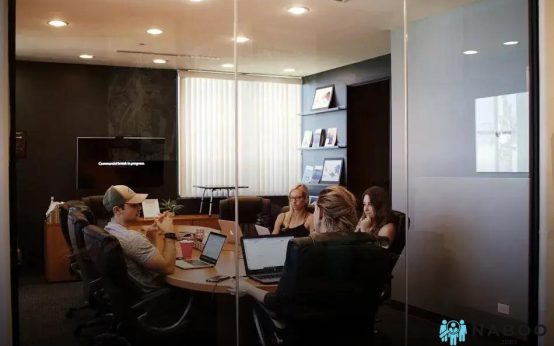Workplace flexibility is more crucial than ever. As modern employees seek better work-life balance, flexibility in the workplace becomes vital. Understanding its role—whether it’s an expectation or a perk—can transform business strategies. Let’s dive into how workplace flexibility is evolving and its implications for both employers and employees alike.
Understanding Workplace Flexibility
Workplace flexibility can be described as varying degrees of control and autonomy an employee can have in order to fulfill job responsibilities and other life commitments. This flexibility often refers to the ability to adjust working hours or to choose the location where one works. With the rise of technology and changing employee expectations, flexible work arrangements have become popular across various sectors and industries.
The concept of flexibility isn’t just limited to remote work. It includes options like flexible scheduling, job sharing, and even compressed workweeks. Flexibility may also allow employees to choose the projects they work on or to be included in decision-making processes related to their roles.
While some might view workplace flexibility as an expectation in modern employment, others still consider it a valuable perk. Flexibility can potentially lead to improved work-life balance, increased job satisfaction, and enhanced productivity for many employees. However, the implementation and definition of flexibility can vary widely by company and industry.
It’s crucial for employers to clearly communicate the type of flexibility offered and for employees to understand how to make the best of these arrangements. As the workforce continues to evolve, the definition and application of workplace flexibility will likely continue to expand, adapting to meet the needs of both employees and employers.
The Evolution of Flexibility in Workplaces
From traditional 9-to-5 setups to progressive telecommuting options, the workplace has experienced significant changes in terms of flexibility. Historically, flexibility was seen as a rare perk offered to accommodate particular life situations, such as parental leave or part-time arrangements. However, the digital era and advances in technology have revolutionized this dynamic, enabling remote work to become more common and accessible.
Technological advancements and globalization
have played pivotal roles in this evolution. With tools like video conferencing, project management software, and advanced communication platforms, teams can now collaborate across time zones and geographic boundaries without physical constraints. Employee expectations have also shifted, with more work-life balance demands. Companies are now considering flexible work arrangements not just to attract talent but to enhance productivity and employee satisfaction. As sociocultural norms continue to evolve, the concept of flexibility in the workplace is no longer just about where work gets done, but also when and how it is achieved. With these changes, flexibility is gradually transitioning into an expectation, reshaping organizational structures and influencing corporate culture.
Benefits of Offering Workplace Flexibility
Offering workplace flexibility can profoundly impact both employees and employers. For employees, it can greatly improve work-life balance. Flexibility allows them to better manage personal responsibilities without compromising job performance. This often results in higher employee satisfaction and reduced stress levels.
From the employers’ perspective, flexibility can lead to a significant increase in productivity. When employees are less stressed and more satisfied, their efficiency and output typically increase. Additionally, employers can attract and retain top talent by showcasing their ability to accommodate personal needs through flexible working arrangements.
Reduced absenteeism is another notable benefit. When employees have the option to work remotely or adjust their schedules, they are less likely to take unscheduled leave. This can decrease the overall absenteeism rates and ensure business continuity.
Moreover, offering flexibility can foster a stronger organizational culture. Flexibility demonstrates trust in employees, which can lead to a more engaged and motivated workforce. It promotes a culture of respect and understanding, where employees feel valued and empowered.
Finally, workplace flexibility can contribute to environmental sustainability. By reducing the need for daily commuting, companies can lower their carbon footprint, promoting a more sustainable approach to business operations.
Challenges Faced by Employers and Employees
In recent years, the concept of workplace flexibility has gained traction, both applauded as a modern approach and scrutinized for its implementation challenges. Employers and employees face various hurdles as they navigate this complex landscape.
For Employers:
- Maintaining Productivity: It can be difficult to ensure that employees remain productive without traditional oversight. Employers worry about dips in output and finding effective ways to measure performance remotely.
- Communication Barriers: The lack of face-to-face interaction can lead to misunderstandings. Companies find it challenging to maintain clear communication and collaboration among team members.
- Technological Investments: Adopting new technologies to support remote work requires significant investment. Employers must ensure these technologies are secure, efficient, and accessible to all employees.
For Employees:
- Work-Life Balance: Flexibility often blurs the lines between work and personal time. Employees may struggle to disconnect, leading to increased stress and potential burnout.
- Isolation: Remote work can lead to feelings of isolation from coworkers and the organization. Employees miss out on social interactions and networking opportunities that office settings provide.
- Career Progression: Concerns about being overlooked for promotions or development opportunities arise, as some fear that physical presence in the office plays a role in advancement decisions.
Both employers and employees are adapting to these challenges, looking for solutions that maintain efficiency while supporting personal well-being. As workplace flexibility continues to evolve, addressing these challenges remains a priority for successful implementation.
Future Trends in Workplace Flexibility
In an ever-evolving work environment, future trends in workplace flexibility point to significant transformations in how employees and employers approach work-life balance. Technology continues to play a crucial role, enabling more connectivity and allowing for seamless remote work setups. With the rise of artificial intelligence and automation, tasks that once required physical presence can be completed from anywhere, making location less of a barrier.
Moreover, there is a growing push for four-day workweeks, which has been gaining traction as companies experiment with reduced hours while maintaining productivity. This concept not only promotes a healthier work-life balance but also reportedly increases efficiency and employee satisfaction.
Also, there is a shift towards a more personalized approach to work arrangements, adapting to individual needs and circumstances rather than enforcing a one-size-fits-all model. Hybrid work models, where employees split their time between home and the office, are becoming more normative, providing the best of both worlds in terms of collaboration and autonomy.
As society becomes increasingly conscious of mental health, workplace flexibility is expected to emphasize well-being. Companies are likely to invest in resources that support not just physical health but mental wellness, including flexible schedules, work-from-home options, and wellness programs.
In addition, the demographics of the workforce are changing. The rise of the gig economy and the increase in freelancers and contract workers are demanding more fluid work options. Future workplace flexibility must accommodate these diverse employment formats, combining traditional roles with more dynamic opportunities for workers.
Lastly, environmental sustainability is a driving force behind flexible work practices, as less commuting and reduced energy consumption at centralized office locations align with global efforts to lower carbon footprints. The future of workplace flexibility is set to be an integral component in both corporate strategy and employee life, adapting to emergent needs and guiding companies and individuals alike towards a more productive and balanced future.




